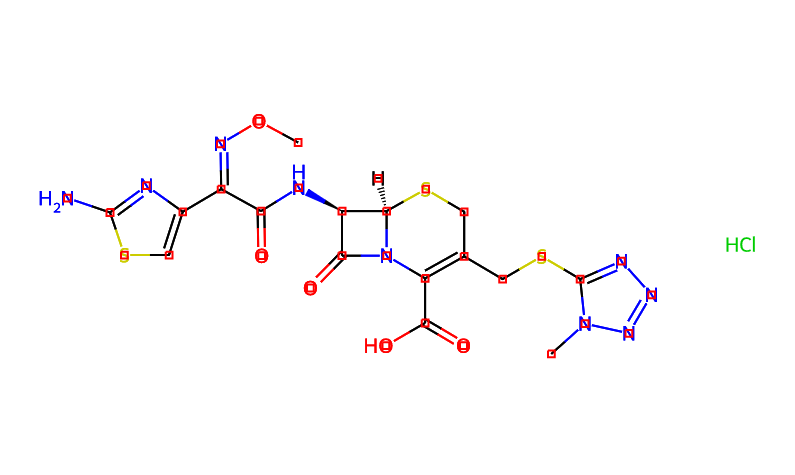- Synthetic anti-infective drugs
- Medications for the digestive system
- Antipyretic and analgesic drugs
- Medications for the blood system
- Medications for the respiratory system
- Anti-allergic drugs
- Medications for the urinary system
- Diagnostic medications
- Immunosuppressive and immunomodulatory drugs
- Vitamins and mineral supplements
- Antioxidants and medications for osteoporosis
- Antiparasitic drugs
- Ophthalmic medications
- Amino acids and their derivatives
- Dermatological medications
- Medications for the circulatory system
- Antitumor drugs
- Medications for the nervous system
- Hormonal and endocrine function-regulating drugs
- Antibiotics
- Others
CAS Number: 75738-58-8




Basic Information
Product Name: Cefmenoxime hydrochloride
CAS Number: 75738-58-8
Molecular Formula: Commonly represented as C16H17.5Cl0.5N9O5S3 (alternatively, C32H34N18O10S6·HCl, which may arise from different preparation methods or forms, but both refer to the same substance when describing it)
Molecular Weight: 529.79 for C16H17.5Cl0.5N9O5S3 or 1059.58 for C32H34N18O10S6·HCl
Physical Properties
Appearance: White to off-white solid
Solubility: It has good solubility in DMSO, reaching up to 65mg/mL (specific solubility may be influenced by experimental conditions such as temperature, ultrasonication, and heating to aid dissolution); however, its solubility in water is low, typically less than 0.1mg/mL
Chemical Properties
Stability: It should be stored under dry, light-protected conditions and avoided from repeated freeze-thaw cycles. In powder form, it can be stored at -25°C to -15°C for up to 3 years, and once dissolved in a solvent, it should be stored at -85°C to -65°C for up to 2 years
Antibacterial Activity: As a third-generation cephalosporin antibiotic, cefmenoxime hydrochloride exhibits antibacterial activity against a variety of Gram-positive and Gram-negative bacteria and is an effective inhibitor of Enterobacteriaceae
Uses and Precautions
Uses: Primarily used for scientific research or drug certificate applications, not for personal medication. In the medical field, it is commonly administered via intravenous or intramuscular injection to treat infections caused by susceptible bacteria
Precautions: During use, wear experimental clothing and disposable gloves, avoiding inhalation, ingestion, or direct contact with skin and eyes. Additionally, attention should be paid to its storage and transportation conditions to ensure product stability and effectiveness

Tai Yau Street, San Po Kong, Kowloon, Hong Kong, China.



